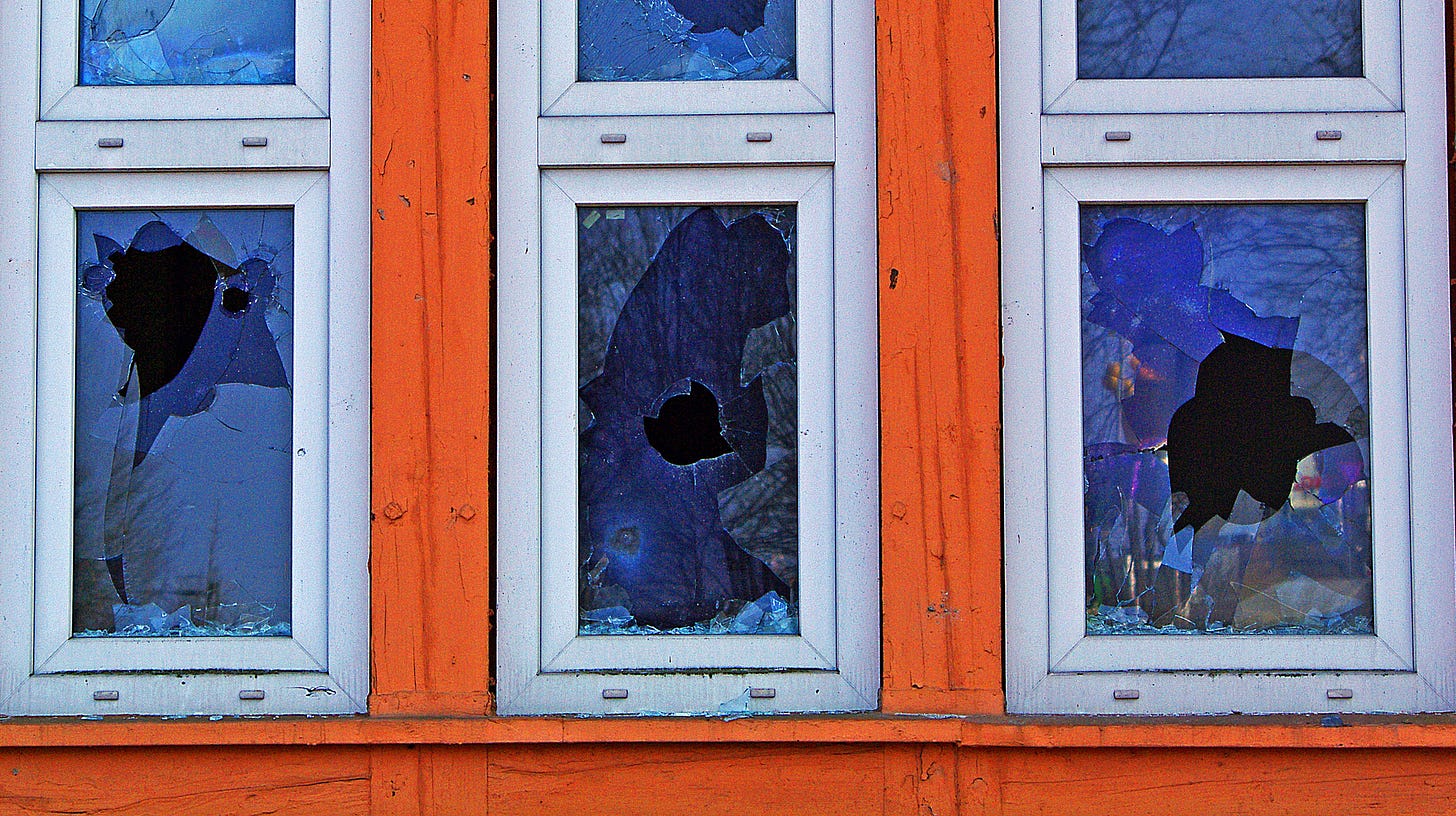Revisiting Broken Windows
Forty years after its debut, James Q. Wilson’s Broken Windows theory offers a lens through which to view America’s crime and law enforcement dilemma.
Political scientist James Q. Wilson died in 2012 at the premature age of eighty. Let’s get straight to the solipsism: He died on my birthday, which I then took and still take as a personal affront by the universe. Not long before he fell terminally ill, we ran into each other at an American Enterprise Institute dinner in Washington. Seeing him was always a pleasure, but on this occasion I had a bone to pick. My husband, Len Garment, had just tried a case for a D.C. client in Chicago, where Wilson had gotten his Ph.D. years before. The judge in the case couldn’t have treated Len’s team of fancy Washington lawyers more shabbily if they had been a bunch of random extras just off the set of My Cousin Vinny.
Len was going to lose the case, and not on the merits. I was miffed. Why hadn’t Wilson ever warned me that Chicago’s many virtues, of which he spoke fondly and often, didn’t extend to providing an even-handed system of civil justice?
Wilson sighed. He sighed a lot around me. He reminded me that Chicago wasn’t New York. Chicago was a place where if you sent an unknown job candidate to apply for a position with a city councilman, the latter might call you after the interview and tell you, “Don’t send me nobody that nobody sent.”
Chicago indeed wasn’t New York. If I wanted shambolic disorderly New York justice, I should stay out of Chicago.
This was the same logic that animated Wilson’s famous 1982 Atlantic piece co-authored with criminologist George Kelling, “Broken Windows.” The thesis of the article was elegant in the way that Wilson essays were, to wit: The distinction made by some policing experts between solving major crimes and maintaining community order was not defensible. There were two reasons. The first was causal: The conditions that led to major crimes were preceded and encouraged by the communal disorder of which broken windows were a symbol.
The second reason was political and psychological. Independent of the rate of major crimes in a neighborhood, the opinions of neighborhood residents about their safety were a function of their sense of the degree of disorder in their environment. Robbery or no robbery, it was hard for people to feel secure in their apartments and streets when they had to step over the supine bodies of hungover drunks to get home.
The first part of this thesis was subject to various kinds of independent empirical verification. Indeed, it wasn’t long before researchers with political views different from Wilson’s began to chip away at his argument. No, they protested, the number of broken windows didn’t actually predict the murder rate: Factors apart from broken windows probably played a bigger causal role. That was why a beat-up car in the Bronx would lose its radio long before a comparable car in Palo Alto attracted the same type of larcenous energy. And, no, the lesson of broken windows wasn’t necessarily that young Black men with low-hanging pants should be prime targets for police interrogation.
On the other hand, some parts of the broken windows theory weren’t vulnerable to the same sort of empirical disproof. Instead, they belonged in the category of Ground Truths. When your neighbors showed a sense of profound unease at the strip club across the street, there wasn’t much you could do to persuade them that they had nothing to fear from those nice young girls working their way through college. If maintaining public order was important to you, all you could do was provide said strip club with good reasons to move to Queens.
That was how Broken Windows became not just an argument about policing methods but a lens through which to describe American society in general.
When the intellectual fashion began to turn, it turned fast. Today, the most frequent reference you’ll hear to “broken windows” treats it as a historical artifact, a dated theory of policing that was discarded because we became aware of the extent to which it subjected young men of color to discriminatory behavior by law enforcement.
But that wasn’t where history left us.
In January, the nation got an obligatory ringside seat at the video from Memphis that documented the killing of Tyre Nichols. This was not evidence on one side or the other of the broken windows argument. It was not about the merits of attending to minor crimes of disorder to keep them from providing permission for major ones. This was the opposite: an absence of underlying crime, then unspeakable violence. No community norm was being violated; no neighbors were complaining about noise or litter.
How did it happen? Well, the change was not part of the ebb and flow of intellectual fashion regarding broken windows policing. It was the intrusion of something much larger, the primitive and recrudescent fear of crime within liberal societies.
And what would Jim Wilson think? I’m fairly confident that I know part of it. Back in olden days, when liberalism was riding high, some of us kept warning that the good times wouldn’t—couldn’t—last. Educated Americans couldn’t keep describing the back-and-forth of interest group politics as if the class resentments simmering underneath these interactions could remain suppressed forever. They would have to be respected, managed, and given their due. Otherwise, we would pay in terrible ways—which, it turns out, we have done.
As for the rest of Wilson’s reaction? I’d like to think that he would have been just plain appalled, like the rest of us.
Suzanne Garment is a senior editor of American Purpose.
Image: Broken windows in a railway station. (Flickr: Lutz Koch)


